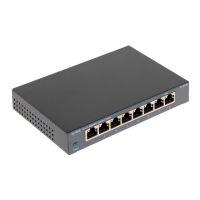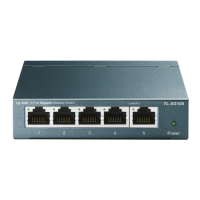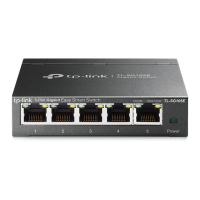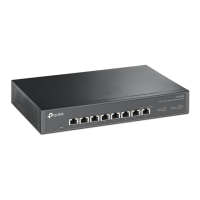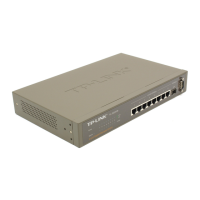User Guide 476
Configuring LLDP Configuration Examples
6.2 Example for LLDP-MED
6.2.1 Network Requirements
As the following figure shows, an IP phone and a PC are both connected to port 1/0/1 of
the switch. It is required that the voice data stream is sent to VLAN2 and other untagged
data stream is sent to the default VLAN1.
Figure 6-1 LLDP-MED Network Topology
Gi1/0/1
IP Phone
Switch
PC
6.2.2 Configuration Scheme
LLDP-MED allows the switch to send its Auto VoIP information to the IP phones for auto-
configuration. In this example, you can configure Auto VoIP and LLDP-MED to meet the
network requirements.
The configuration overview is as follows:
3) Create VLAN2 for the voice data and keep the PVID of port 1/0/1 as the default value 1.
In this way, all the untagged packets from the PC are sent to VLAN1; all the packets with
VLAN Tag 2 from the IP phone are sent to VLAN2.
4) Configure Auto VoIP on port 1/0/1.
5) Enable LLDP globally.
6) Configure LLDP-MED on port 1/0/1.
Demonstrated with T1600G-28TS, this chapter provides configuration procedures in two
ways: using the GUI and using the CLI.
6.2.3 Using the GUI
1) Choose the menu L2 FEATURES > VLAN > 802.1Q VLAN > VLAN Config and click
to load the following page. Specify VLAN ID as 2, give a VLAN name, and select
port 1/0/1 as untagged member port. Click Create.

